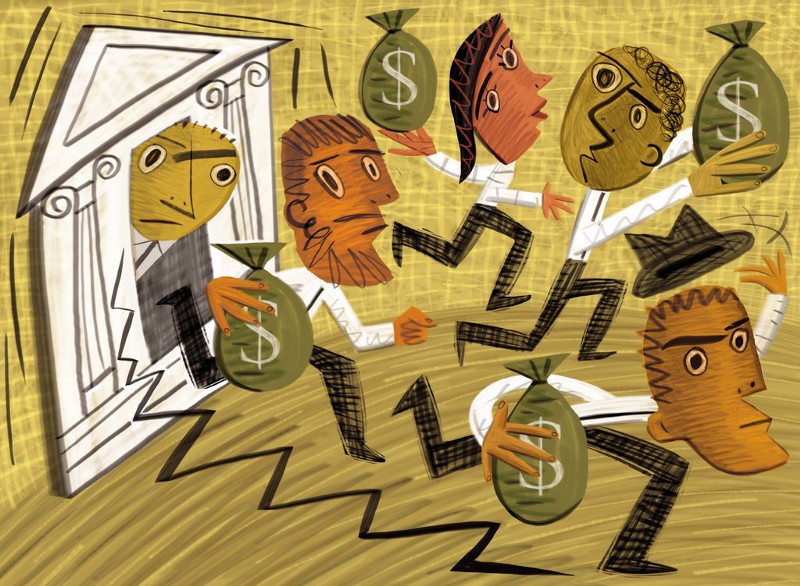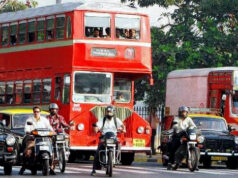Loans go bad. For all banks, private and government-owned.
Loans go bad, because business is inherently risky. Banks know this, and they plan their affairs around risk management. They do this, firstly, by charging different interest rates to different customers — long-standing customers with sound balance sheets get lower rates; newer and riskier businesses pay higher rates.
The underlying principle is that higher risk should be compensated by higher reward.
This assessment of risk is at the heart of banking, and successful banks are those which are able to assess risk well. When loan officers make errors of judgement, and borrowers don’t pay interest on loans, those loans no longer perform their task of earning money for the bank. Hence they get called Non Performing Assets, or NPAs.
As a result of the Nirav Modi scam, we are hearing a great deal about NPAs in the Indian banking system, and are told that the current ratio of NPAs to total loans is above 10%. This is an abnormally high ratio. To put it into a global perspective, the current NPA figure in the USA is 1.3%, in the UK 0.9%, and in our southern neighbour, Sri Lanka, banks have an NPA of 2.6%.
If you divide Indian banking into two parts — government banks and private banks, the NPA chasm is wide — about 14% for the public sector, and 4% for the private. These numbers, especially for the former, will probably go up once the Nirav Modi scam gets accounted for. Without getting into too much detail, it is very clear that the size of the Indian bad loan problem is much, much bigger for government banks.
Why are government banks doing such a good job of making bad loans?
Ownership. And incentives.
These two words tell you why Air India has the worst on-time departure rate of all Indian commercial airlines, and the largest losses. It also tells you why most of us use private telecom companies for our cell phones, rather than MTNL or BSNL. Or why 40% of Indian parents would rather pay to send their children to school, than get them a free education at a government school.
Our government doesn’t do a particularly good job of anything, whether of dispensing justice, or of making sure that those who have driving licences know how to drive safely.
But when you compare government owned businesses with those that are privately run, the difference is particularly stark, and I believe it comes down to the relationship between the business and its owners.
When I set up a business, my economic fortunes are closely linked to the success of the business. If it thrives, I can upgrade from a Maruti Alto to a Mercedes. If it doesn’t do well, I have difficulty putting petrol in my car. The interests of the business and the owner are aligned.
Now imagine this business grows, goes public, and I own only 33% of its shares. I still run it, but for every rupee the business earns, only 33 paisa belong to me; other shareholders are the rightful owners of twice as much of the company’s earnings as I. If I am greedy, I have an incentive to take money out of the company. For every such rupee I take out, only ⅓ rd actually belongs to me . The government tries to protect the interests of the other shareholders by an elaborate regulatory structure of Independent Directors, auditors, Registrar of Companies, SEBI, etc. I’m sure they help, but I think the most important reason that small shareholders don’t get cheated more often has to do with incentives.
Even if the original owner, the so-called promoter, owns only 33% of a company, he still has a deep interest in the success of the company — he derives a salary and perquisites from it; his reputation as a captain of industry comes from the continued success of the business; most importantly, if the company does well, and develops a reputation as a well-run business, its shares do well. The value of this shareholding is the biggest source of wealth of business-owners. When you hear that Mukesh Ambani, or Jeff Bezos, is worth so many billion dollars, that number is largely made up of the value of their share-holding in their firms. In other words, the promoter has a deep interest in making sure that, even if he cheats the company, it is only to the extent that he does not do it great harm.
So who has the same long-term sense of ownership in the healthy survival of a government-owned bank? Who owns it?
Everybody, and hence nobody.
Since the majority share is owned by the Government of India, we are all ultimately shareholders of these banks. But that share is so tiny, that unlike a Mukesh Ambani heading Reliance Industries, we have no say in running the bank. The bank, instead, is run by managers, headed by a Managing Director. This Chief Executive changes every couple of years — during the time the Nirav Modi scam was running, PNB had 3 chief executives. This CEO reports to a board of directors — some RBI and finance ministry officers, some independent directors — none of whom have a long-term interest in the bank. Instead of this alignment of interest and ownership, we have every form of regulation and audit. To quote Debashis Basu in the Business Standard on March 5th, “concurrent audit, internal audit, statutory audit, RBI audit, risk-based internal audit, revenue audit, information systems audit, snap audit, segment audit…”
Who loses when these audit systems don’t work, as they haven’t? Every citizen of India, and hence nobody. The Managing Directors move on, the govt officials continue up the bureaucratic ladder, independent directors serve on other boards, and the auditors audit other companies.
The public exchequer loses money, but a few billion dollars, spread across a billion people disappears into the mess of public accounting. Yawn, and move on.
Who gains? Obviously, Nirav Modi gained. But systems were over-ridden to allow the fraud; then, other systems were bypassed so the fraud was not detected. For years on end. This required wide-spread collusion. Bankers, and their bosses in the Ministry of Finance, know the value of money, and they would not have done allowed Nirav Modi to make 11,000 crore without a decent share.
When Vijay Mallya’s Kingfisher Airlines got into trouble, his bank loans from a consortium of government banks were converted into equity. Happens often, but the price at which the conversion happened was 60% higher than the price of the shares in the market. That means that instead of selling, say, 10 crore shares in the market to pay the banks, Mr. Mallya got off by transferring 6 cr. shares to the banks. Everyone in the deal knew how to add, subtract and multiply. So the deal only adds up if both parties profited from the over-pricing of Kingfisher shares.
The real bosses of public sector banks are those who run the finance ministry. They are supposed to represent us, the ultimate share-holders. They are the ones who can pressure bank directors to make sub-optimal loans, and then to roll them over. They come and go with elections, and have no long-term interest in the health of the banks. When NPAs mushroom, they order recapitalisation, meaning that our taxes get used to compensate for Modi and Mallya frauds, and make sure the balance sheets have enough capital for the next round of bad loans. When things go really bad, they point fingers at the previous government. Depending on the flag we wave, we believe them, or don’t.
But the patronage machine rolls on. And it is because of this love of patronage that there is no hurry to privatise public sector banks. Which government wants to give up its control over 70% of the banking assets of the country?
Read more about banking problems: https://spontaneousorder.in/bank-privatisation-is-not-necessarily-the-solution/
Post Disclaimer
The opinions expressed in this essay are those of the authors. They do not purport to reflect the opinions or views of CCS.






